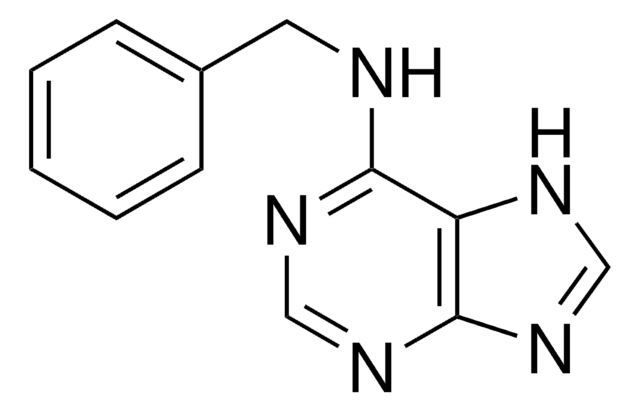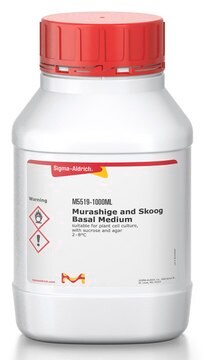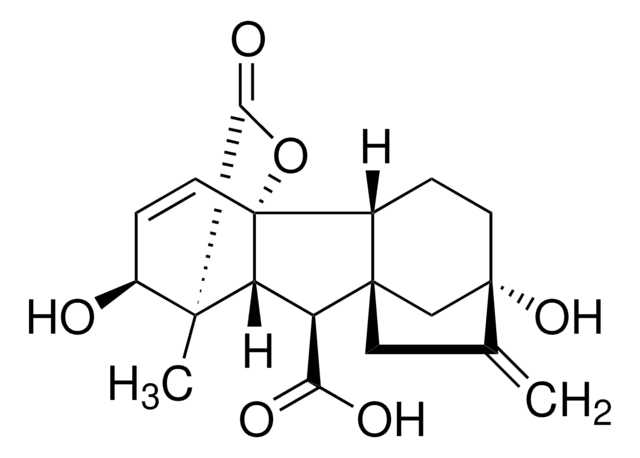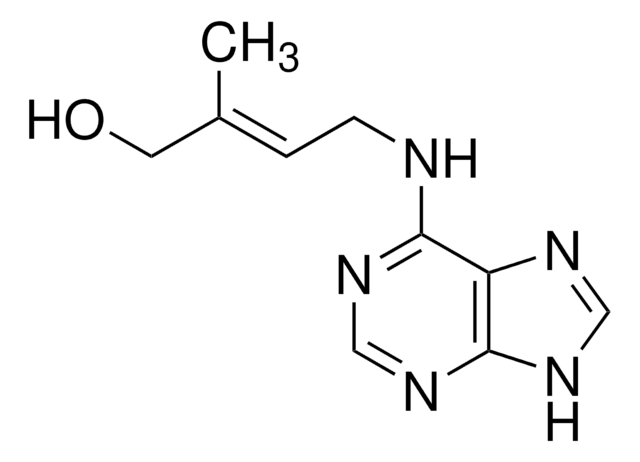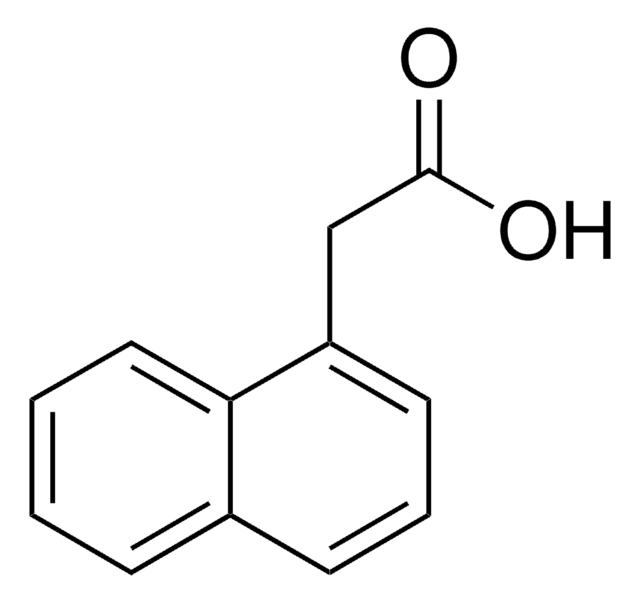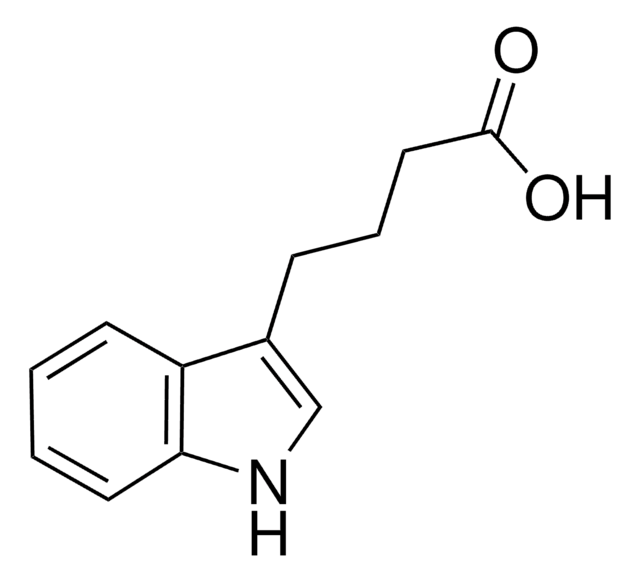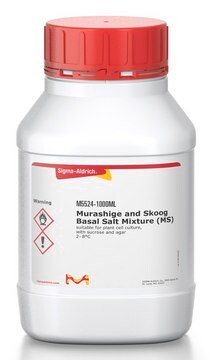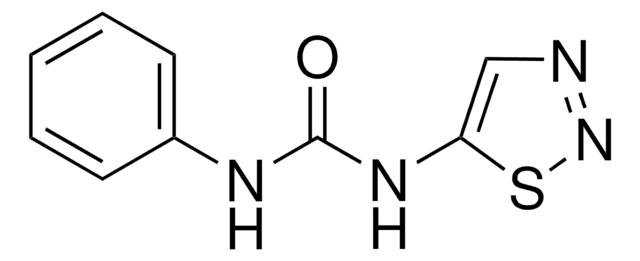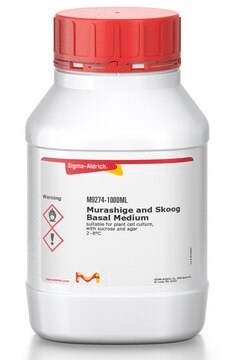B3274
6-Benzylaminopurine solution
1 mg/mL, suitable for plant cell culture
Synonym(s):
BAP, BA, N6-Benzyladenine
Sign Into View Organizational & Contract Pricing
All Photos(1)
About This Item
Recommended Products
sterility
sterile-filtered
Quality Level
form
solution
concentration
1 mg/mL
technique(s)
cell culture | plant: suitable
application(s)
agriculture
storage temp.
2-8°C
SMILES string
C(Nc1ncnc2nc[nH]c12)c3ccccc3
InChI
1S/C12H11N5/c1-2-4-9(5-3-1)6-13-11-10-12(15-7-14-10)17-8-16-11/h1-5,7-8H,6H2,(H2,13,14,15,16,17)
InChI key
NWBJYWHLCVSVIJ-UHFFFAOYSA-N
General description
6-Benzylaminopurine, benzyl adenine (BAP) is a synthetic cytokinin.
Application
6-Benzylaminopurine solution has been used as a component in the Murashige & Skoog medium (MS) for culturing mandarin explants and plantlets of Dendrocalamus asper (Schultes f.). It has also been used as a supplement in Nitsch and Nitsch medium (NN) of grapevine explants,
Biochem/physiol Actions
6-Benzylaminopurine (BAP) is used as a cytokinin supplement to plant growth medium It increases post-harvest life of green vegetables by preventing chlorophyll degradation. It is used in micropropagation. However, in some plants, BAP leads to inhibition in growth and root formation. BAP phenyl ring based derivatives are widely used to test their anti-cancer effects
Storage Class Code
12 - Non Combustible Liquids
WGK
WGK 1
Flash Point(F)
Not applicable
Flash Point(C)
Not applicable
Personal Protective Equipment
dust mask type N95 (US), Eyeshields, Gloves
Choose from one of the most recent versions:
Already Own This Product?
Find documentation for the products that you have recently purchased in the Document Library.
Customers Also Viewed
Is BA (6-benzyladenine) BAP (6-benzylaminopurine)?
da Silva JAT
The Asian and Australasian journal of Plant Science and Biotechnology , 6(1), 121-124 (2012)
Somatic embryogenesis of Vitis vinifera L.(cv. Sugraone) from stigma and style culture
Morgana C, et al.
Vitis, 43(4), 169-173 (2004)
Bektas Tepe et al.
Natural product research, 21(13), 1133-1144 (2007-11-08)
In this study, production and optimisation of rosmarinic acid, a phenolic acid and an economically important metabolite, was investigated in the callus cultures established from the mature seeds of Satureja hortensis L. (summer savory) plant. Gamborg's B5 basal medium, supplemented
Mangal S Rathore et al.
Applied biochemistry and biotechnology, 163(7), 860-868 (2010-09-22)
Aloe vera L., a member of Liliaceae, is a medicinal plant and has a number of curative properties. We describe here the development of tissue culture method for high-frequency plantlet regeneration from inflorescence axis-derived callus cultures of sweet aloe genotype.
In vitro cultures and regeneration of Bienertia sinuspersici (Chenopodiaceae) under increasing concentrations of sodium chloride and carbon dioxide.
Rosnow J, Offermann S, Park J, et al.
Plant Cell Reports (2011)
Our team of scientists has experience in all areas of research including Life Science, Material Science, Chemical Synthesis, Chromatography, Analytical and many others.
Contact Technical Service